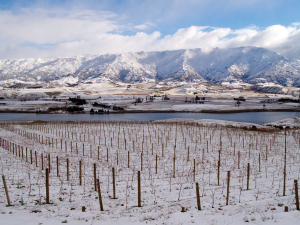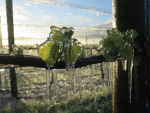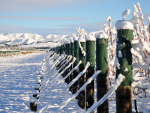Mean temperatures have been close to average, although weeks of cool daytime maximums in Canterbury have dragged the mean temperature down along parts of the South Island east coast.
Sea surface temperatures have been above average around New Zealand for some time, particularly in the north Tasman Sea. This has encouraged the development of low pressure systems through winter and has contributed greatly to the heavy rain events over the upper South Island. There were signs in early June of cold air pushing out of Antarctica, and a cold period of weather did mark the start of winter. However, there have been no further significant polar outbreaks during the first half of winter and, aside from Central Otago, the frequency of frost has been lower than average in most regions. When high pressure has dominated, the anticyclones have persisted east of the South Island, which has maintained a predominantly northeast flow over New Zealand. As a result, cloud cover has proven tricky to shift along the east coast of both islands and humidity
has been elevated for much of the past three months.
The Southern Oscillation Index (SOI) has remained neutral over winter and is not giving any indication that an El Niño or La Niña will develop before the end of the year. It is increasingly likely that the often cloudy conditions and bursts of heavy rain may continue through into October.
Sea surface temperature
In just a few weeks spring will be here. The sun will be noticeably stronger, and the days will lengthen at an increasing pace. Frost fans have been serviced across the country, and many will be preparing for cold and often sleepless nights. The lack of cool winter nights is unlikely to lull many growers into complacency regarding frost – during the past seven years there have been several southerly blasts in late September and October that have rivalled the coldest weather of the year. Those cold southerly outbreaks can still pack a real punch right through spring, and our weather history has also shown that many of the coldest weather events in New Zealand have occurred late in winter or early spring. Oceans warm and cool relatively slowly compared to large landmasses, and the seas around New Zealand are coolest in early September and not during mid-winter. It takes some time for the oceans around our shores to be at their warmest (usually February or even early March) and they then cool at a relatively slow rate through autumn and into early winter.
It is well documented that as sea temperatures rise, ocean currents and regional weather patterns are significantly affected. The ocean and the atmosphere are in a state of continuous interaction and warmer oceans mean that the amount of water vapour available in the atmosphere over the ocean increases, bringing greater potential for rain events around New Zealand to become more intense and more frequent.
Heavy and intense rain bearing systems will become a feature of New Zealand’s climate during the coming decades, as the ocean continues to warm. Growers will have to adapt to the increased frequency of higher humidity and rainfall.
Outlook for August and September:
Gisborne/Hawke's Bay
Temperatures are likely to run above average along the upper east coast of the North Island through early spring. There are still likely to be cold changes at times and rainfall totals are likely to be near average. With the potential for low pressure systems to move eastwards across the upper North Island there will be some risk of heavy or persistent rain during August and September about Gisborne.
Wairarapa
Temperatures are likely to be near or above average across Wairarapa. The increased cloudiness may keep daytime maximums near or even below average during August, while nighttime minimums run above average. There will still be the risk of early spring frosts.
Nelson
Temperatures are likely to continue to run at or above average through late winter and into spring. There remains an increased risk of rain bearing systems through early spring and this may reduce the frequency of early spring frost.
Marlborough/North Canterbury
Temperatures remain near or above average, but, like Wairarapa, daytime temperatures in Canterbury may run near average until mid-September. The risk of heavy rain over the upper South Island means that there is an increased chance of above average rainfall for Marlborough. North Canterbury may remain near average. There will be some risk of early spring frost, but the frequency is likely to be impacted by higher humidity and the potential for more frequent northeasterlies.
Central Otago
Temperatures are likely to remain near or above average through late winter and into spring. Early frosts are likely as the lower South Island is less influenced by the increase in low pressure activity in more northern parts of New Zealand. Sunshine should be higher and rainfall near or even below average through until mid-spring. This means that the diurnal range between minimum and maximum temperatures will be greater than most other parts of the country.
James Morrison runs Weatherstation Frost Forecasting: weatherstation.net.nz














